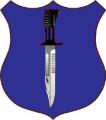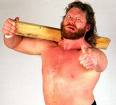In defence of TRADOC, TRISA after editing it to fit in with the accepted style, published my book, 'How the PLA Fights: Weapons and Tactics of the People's Liberation Army', which is primarily from Russian and Chinese language sources. They saw fit to publish the Second edition, warts and all so they are definitely not hidebound nor discard material when 'not inevented here' ( I am an Australian), when going about their duties. TRADOC would be the least hidebound military organisation I know.














Bookmarks